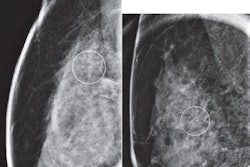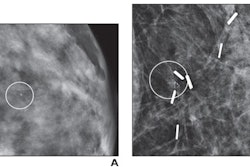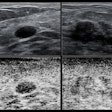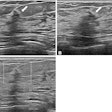Advanced cancers on digital breast tomosynthesis (DBT) occur with longer intervals from prior screening, a study presented November 30 at the RSNA 2023 annual meeting found.
In her talk, Liane Philpotts, MD, from Yale University presented her team’s findings showing through DBT screening that until about 21 months, the rate of advanced cancers was stable. After that time point, it increased by nearly 10%.
“With DBT screening, an interval of less than two years may help reduce the rate of advanced cancers,” Philpotts said.
While breast cancer screening aims to detect nonlethal cancers early, many women do not adhere to screening guidelines, which may lead to advanced cancers carrying a worse prognosis. These are characterized by larger size, lymph node involvement, and aggressive molecular subtypes.
Philpotts and colleagues previously led research showing a significant decrease in the rate of advanced cancers with DBT screening compared with 2D full-field digital mammography. For the current study, they investigated the rate of advanced cancers varied with DBT screening intervals.
They included data from 968 invasive cancers detected on DBT, of which 316 were advanced cancers. The advanced cancers were defined by criteria in the Tomosynthesis Mammographic Imaging Screening Trial (TMIST). These included invasive cancers > 2 cm, HER2+, or triple-negative cancers > 1 cm, one or more positive axillary lymph nodes, and distant organ spread.
The team compared advanced cancer rates with those of nonadvanced cancers from the prior screening mammogram by the following time points: 11-14 months, 15-18 months, 18-21 months, 21-24 months, and 24-plus months.
The researchers found that the interval from prior screening for the nonadvanced cancers was significantly less than for the advanced cancers.
| Comparison of interval times between advanced, nonadvanced breast cancers on screening DBT | ||
|---|---|---|
| Intervals | Nonadvanced cancers | Advanced cancers |
| Average | 775 days | 868 days |
| Median | 547 days | 631 days |
| *All data achieved statistical significance. | ||
The team also reported that the proportion of advanced cancers increased with time. This included a proportion of 29% from one to two years, and 39% in four to five years. In the U.S., breast cancer screening occurs every one to two years depending on which guidelines are used.
The researchers also found that the rate of advanced cancers showed a trend to increase from 25% to 28% until 638 days, after which it increased to 36%.
Philpotts said that these results suggest that shorter DBT screening intervals are key to reducing the risk of advanced cancers developing in women.



















